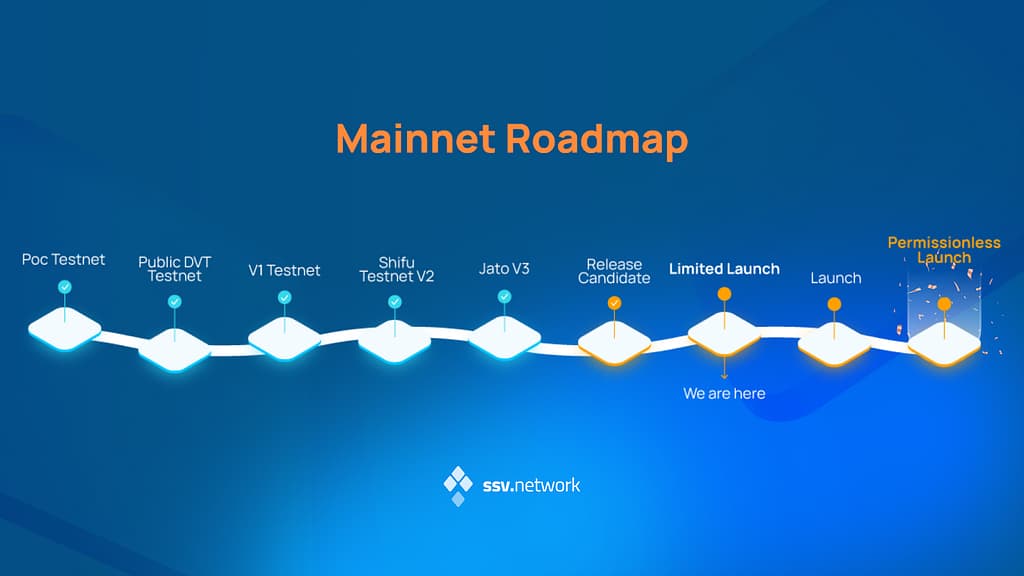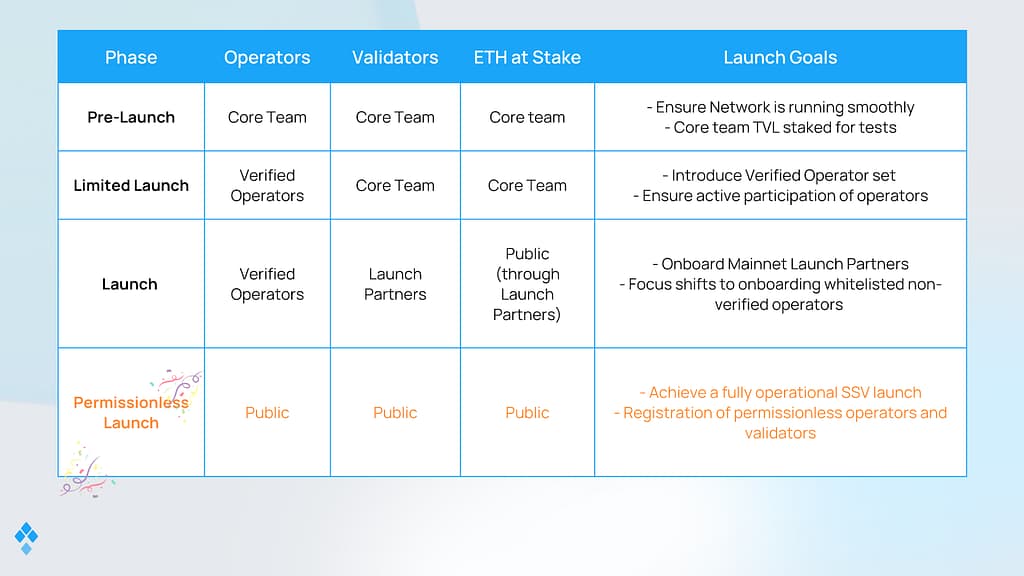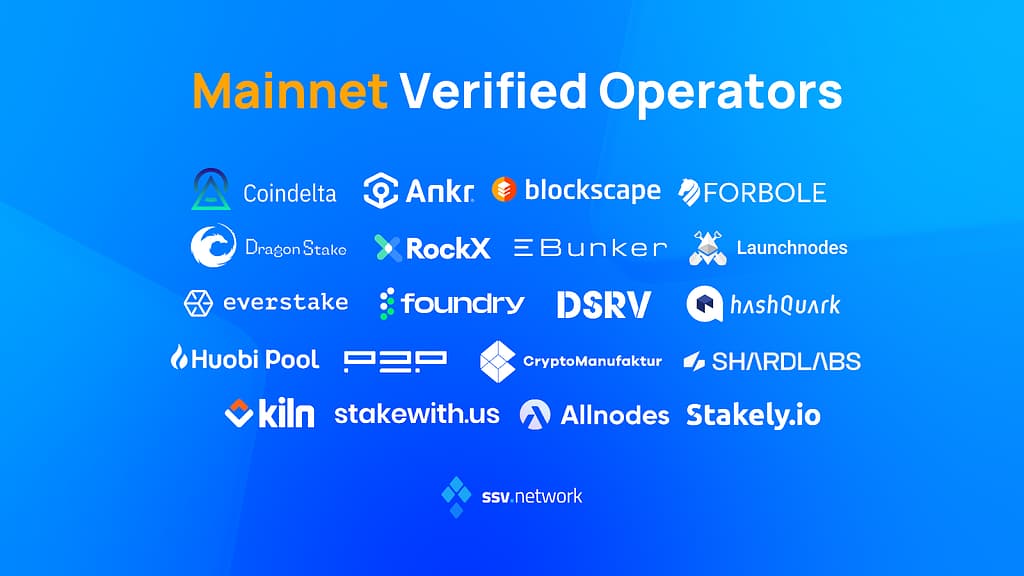Author: Dark Side of the Moon
On August 8th, ssv.network released a detailed article introducing the details of the mainnet validation operator (VO) to coincide with its new workflow after entering the limited launch phase on August 1st. 20 mainnet validation operators will truly participate in the node operation of SSV, marking that it is only one step away from a true DVT cluster.

SSV (Secret Shared Validators) is the creator of the concept and technology of DVT. In the process of upgrading Ethereum to PoS, SSV and the Ethereum Foundation jointly explore the necessity of DVT (Distributed Validator Technology) to reduce the possible single point of failure in the network under PoS state.
- Clarifying 6 Misconceptions about Bitcoin’s Lightning Network
- Why does Binance continue to attract new users despite regulatory challenges?
- A Review of 10 New Projects Worth Paying Attention to Recently
DVT is a technology-oriented concept that can be used not only in the staking field, but also in the direction of Rollup or wallet accounts. It is a versatile technology along with ZK, MPC, etc.
The first step towards decentralization
In early July, ssv announced the launch plan of the mainnet. At that time, the mainnet validators and operators were actually controlled by ssv.network, so the staking status of ETH was centralized.
In this limited launch phase, the biggest change is the introduction of validated operators (VO) selected by the project team, which means that the degree of decentralization of the entire network will be improved. However, the validators and the staking status of ETH will still be controlled by the project team to ensure the security of the mainnet operation.

In the limited launch phase, a total of 20 VOs have been officially whitelisted, including Ankr, Allnodes, Blockscape, Coindelta, CryptoManufaktur, DragonStake, DSRV, Ebunker, Everstake, Forbole, Foundry, HashQuark, Huobi Pool, Kiln, Launchnodes, P2P, RockX, Stakewith.us, Shardlabs, Stakely.io.
Each VO will manage no less than 30 validators, and a total of 150 validators will be randomly distributed within the VO cluster. The nodes do not need to coordinate with each other, and each validator can combine and call any VO operator according to their own needs.
Furthermore, the SSV network now has 4 different execution clients and 5 consensus clients, spread across 4 continents, with a total of 182 validators.
In this phase, SSV will also integrate MEV into the DVT network for the first time. Validators can openly and transparently choose operators that meet the requirements of MEV relays.

At this stage, VO applications are actually closed, and the official retains control over them. Although the election is not public, users can freely choose based on different factors of existing VOs, including node location, execution efficiency, and clients and MEV relays.
It should be noted that the selection of VOs needs to follow strict KYC standards and operational experience to ensure operational security and efficiency. Currently, it is not possible to completely avoid the influence of regulations. Only when the network enters the permissionless launch phase will it truly enter a fully decentralized state.
SSV reduces the complexity of DVT network deployment
Currently, the decentralization level of ssv.network is not high, and its market share in the entire ETH staking is also low, far lower than centralized platforms such as Lido (31.68%) or Coinbase (9.28%).

However, as mentioned earlier, ssv.network and the concept represented by DVT can change the existing staking situation, and even service providers like Lido can also apply DVT to become decentralized service providers.
As early as April 2022, Lido updated its roadmap, indicating that it will gradually adopt DVT technology. SSV DAO also launched a $50 million ecosystem fund in January this year to promote the popularization of DVT.
DVT is a network cluster composed of nodes, hoping to provide secure redundancy for validators in a decentralized manner. Before the mainnet launch, ssv.network has undergone two years of testnet phase, and projects like Lido V2 / Stakewise V3 / Rocket Pool will gradually enter the DVT phase, completing the decentralization transformation of the Ethereum staking system.
In the final analysis, SSV greatly reduces the difficulty of implementing DVT. In terms of its architecture, SSV’s network can be divided into four parts:
- Secret sharing. Validators use BLS keys, and a single BLS “key share” can be combined into a single aggregate key (signature);
- Threshold signature scheme. Determines the minimum number of validators required to sign a duty, for example, 3 out of 4;
- Distributed key generation (DKG). Generates key shares and distributes them to nodes in the cluster for the encryption process of existing or new validator keys;
- Multiparty secure computation (MPC). The complete validator key is generated using multiparty computation, and no single operator knows the complete key. They only know their own part;
The block proposal agreement will eventually be reached, and the consensus protocol will select a node as the block proposer and share the block with the nodes in the cluster. These nodes add their shared keys to the aggregated signature. When a sufficient critical mass is reached, the block will be generated on the Ethereum network.
In the current Ethereum staking market, it is mainly divided into individual stakers, staking-as-a-service, and staking pools. DVT has utility for all three, and once widely adopted, it can directly promote the decentralization of Ethereum.
Like what you're reading? Subscribe to our top stories.
We will continue to update Gambling Chain; if you have any questions or suggestions, please contact us!